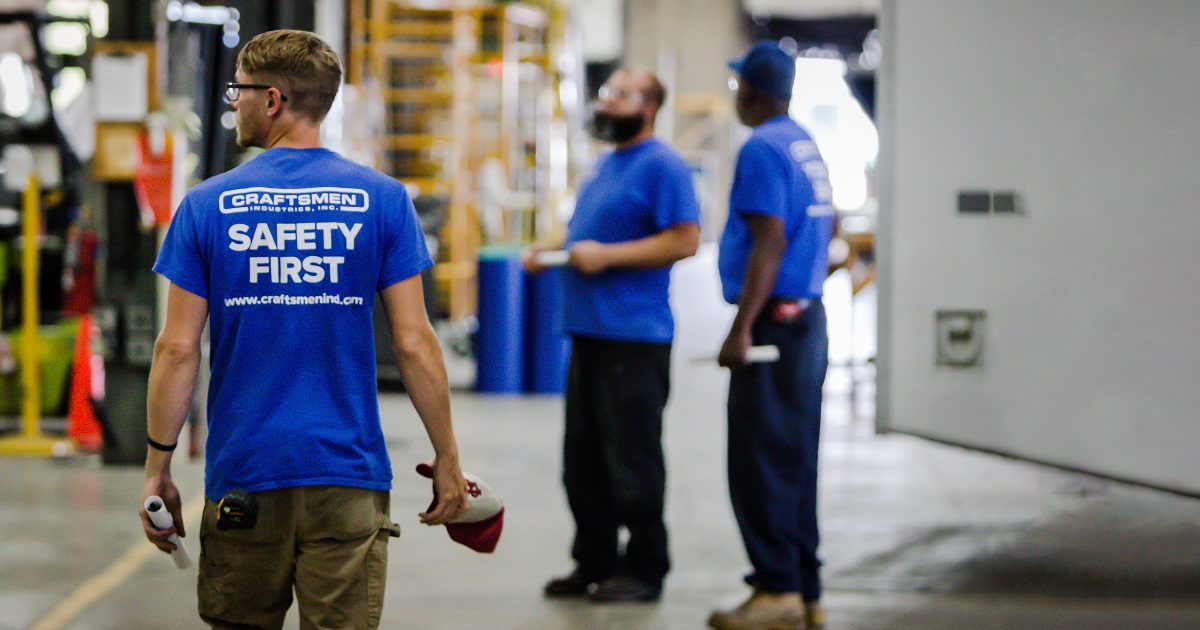For Media Inquiries
Contact Revee White, Director of Marketing and Communications at rwhite1@mem-ins.com or 573.499.4190.
Substance misuse comes in many forms. Almost 21 million Americans have at least one addiction. But only 10% of them receive treatment for it. COVID-19 caused 2020 to be a hard year for many. Statistics show that more people started dealing with depression. The risk of substance misuse is on the rise.
How can employers support at-risk employees? What measures can they implement? And what role do legalized substances play when it comes to safety?
On this episode of the WorkSAFE Podcast, we are joined by Nicole Dawsey. She is the Executive Director of Prevent+Ed. The organization works to reduce and prevent harm from substance misuse and addiction. They also offer education, intervention, and advocacy.

First, we’ll talk about current attitudes towards addiction and workplace safety. Then, we’ll share how substance misuse impacts the workplace. Finally, we’ll talk about steps employers can take to support employees.
Listen to this episode on the WorkSAFE Podcast, or read the show notes below.
Substance misuse vs. substance abuse
When it comes to drug and alcohol addiction, many people have negative feelings. Moreover, when addiction enters the workplace, those feelings get even worse.
A common term used to describe it is ‘substance abuse’. This phrase frames those who struggle with addiction as ‘bad people’, or a problem. But Dawsey points out that addiction isn’t a choice. “It’s not an opinion, it is a scientific fact, that substance use disorders are diseases,” she explained. There are symptoms and a prognosis. Prevention and treatment are available. Further, recovery is possible.
Addiction is considered both a disease and a mental health condition. Better terms to use are ‘substance misuse’ or ‘substance abuse disorder’. This puts the person with the addiction first, and the problem second.
Misuse is not an excuse
Certain substances are legal in many states. For example, medical marijuana is now available in Missouri. It is considered a treatment option. Most employers have a zero-tolerance policy. This means that employees can’t be under the influence of anything: drugs, alcohol, prescription medication. With states facing continued legalization, Dawsey suggests these policies may not even be possible anymore. But this doesn’t mean that safety takes a back seat.
Prevent+Ed doesn’t suggest that people should be using mind-altering substances on the job. This is especially important for drivers, or those who work with heavy machinery. “For example, we provide drug-free workplace trainings to over the road truck drivers,” she added.
Employers often assume employees leave their personal life at home. This just isn’t the case. Some employees may use alcohol to cope – and then come in hungover. They may use prescription medication to deal with pain or sleep issues. Substances could be helping them deal with their problems.
But struggling with substance misuse isn’t a reason to put others at risk. It should have consequences. This makes employer support that much more important. Investing and supporting a struggling employee may lead employers down a different – and better – path.

Substance misuse: Impact on the workplace
Substance misuse takes a toll on employees and employers. The average cost of substance use disorders for every 1,000 people in a workforce is $370,000. Employees with addiction issues also tend to miss 50% more work days than their peers.
When substance misuse is found out, the first action is usually to fire the employee. But addiction is considered a disease. Employees who have other diseases, such as asthma or diabetes, aren’t treated that way. Employers usually aren’t equipped to deal with substance use disorder. But Dawsey is out to change that.
Supporting employees with substance use disorder
If an employee has a problem with substance misuse, then what should employers do? It’s important to think about how to support them. Dawsey recommends these strategies for employers who aren’t sure where to start.
Employee training
Substance use is just one way an employee may try to cope. Those who are struggling in their personal life may give off warning signs. It’s important for managers and supervisors to recognize these.
Mental health first aid can help. This free training helps employers and employees recognize red flags in the workplace. Addiction can also bring on feelings of hopelessness. Suicide prevention programs can train staff to recognize when employees start to feel like they’ve run out of options.
Flexible scheduling
People with substance use disorder can find help in many places. For example, programs like Narcotics Anonymous (NA) and Alcoholics Anonymous (AA) provide community support. Some employees work through addiction with outpatient treatment. Telehealth connects employees to medical providers through virtual appointments and smart devices.
A flexible work schedule may help them maintain their treatment and recovery. An hour off to attend a meeting can make a huge difference for employees.
Employee Assistance Programs (EAP)
An employee assistance program (EAP) is a long-term solution. This is a set of resources and services that help employees. For example, many businesses with an EAP offer financial and stress management classes. Dawsey points out that sometimes, help for those with substance use disorders is overlooked. If you have an EAP, review what kind of services you offer to your employees.

Reach out for help when needed
For many employers, helping employees with substance misuse is hard. Most HR professionals don’t have specific background in addiction issues. They aren’t sure what kind of help employees need, or when to get it. As a result, they simply fire the employee. But that doesn’t help the person struggling. The business also loses someone they’ve invested time and training into. Where can employers turn to for assistance?
“Honestly, one of the best ways to start would really be just calling us,” Dawsey explained. Prevent+Ed has provided unbiased referrals since 1965. They work with the employee to figure out which issues they are facing. Then, they hand them off to the appropriate resources. This is a good option for small businesses, or ones that don’t have an EAP. “Because we don’t provide treatment, we don’t have any skin in the game,” she added. “That allows the actual company to not feel like they have to make those judgment calls.”
The referral service costs $25. The employee pays it. However, Dawsey points to this cost as a consequence. Just because employers offer help doesn’t mean employees get a free pass for using substances in the workplace. Their behavior can put themselves and their team members at serious risk. Getting help can be a condition of continued employment. And the fee is a small price to pay compared to losing a job completely.
Creating programs with employees in mind
Employee assistance programs should be created with employees in mind. But when it comes to training and programs, “Cost is king” for most employers, Dawsey admits. Websites like Prevent+Ed and Talk About It MO are a great place to start for free and low-cost resources. Flexibility also has huge value for employees, especially during the COVID-19 era.
Workplace safety still comes first when it comes to substance misuse. However, no employee is immune to struggle. They don’t anticipate having personal issues – but they happen. Offering resources doesn’t mean employees get a free pass. It simply creates an opportunity for them.
For Dawsey, no EAP is complete without compassion, or accountability. “How can we create an environment that embraces humans?,” she asked. Employees are the most valuable asset an employer has. And supporting them in their time of need is worth the investment.
For free safety posters, sample policies, and safety toolkits, visit our Resource Library. Then, learn more about workplace drug and alcohol use in this WorkSAFE Podcast episode.